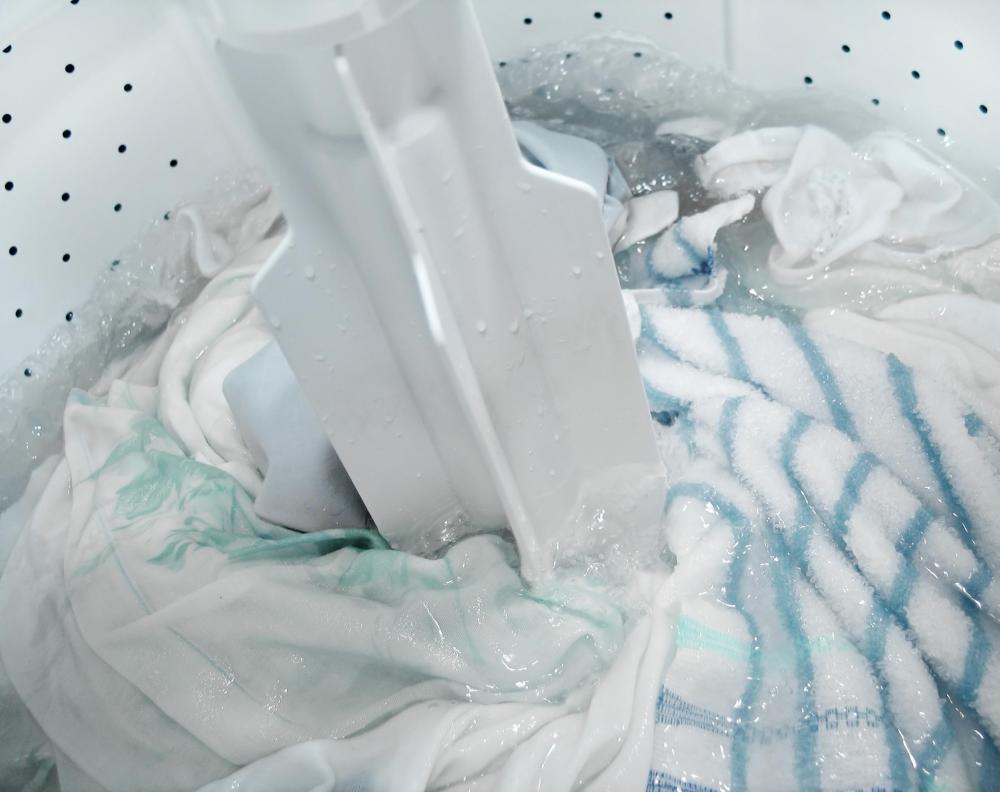At WiseGEEK, we're committed to delivering accurate, trustworthy information. Our expert-authored content is rigorously fact-checked and sourced from credible authorities. Discover how we uphold the highest standards in providing you with reliable knowledge.
What Are the Different Washing Machine Parts?
There are a few types of washing machines, but all have mostly the same washing machine parts. The most popular spin-dry machines, first sold in the early 1950s, now include many different models that are differentiated mainly by their controls. Found in almost every home, the washing machine is electrically powered, and has a complex mechanism driven by an internal motor at the bottom, which generates the motion needed to get a spin going.
The motor is connected to a transmission that in turn is linked to an agitator, a part that is located in the middle of the machine. Like a car, the transmission controls which direction and at what speed parts are moving. This involves both a back-and-forth and a full spinning motion in a washing machine. Other washing machine parts are connected to the motor, such as a pump, which siphons water from the tub where the clothes fit into. The pump enables the water to pass through holes in the side of the tub and through a drain pipe after clothes are washed.

One of the more complicated washing machine parts is the pump. It can send water out to the drain or re-circulate the water back into the machine. Depending on what cycle the washing machine is running, the pump can spin in one direction or another to change the direction of water flow. The pump is actually stationary and connected by a coupling to a clutch, which moves around in the system along with the motor. Teeth on the clutch and an electromagnet enable the pump and motor to move together when necessary.

A washing machine hose makes up part of the unit’s plumbing system. There are lines for both hot water and cold water connected to one hose, and the flow of either is controlled by solenoid valves. Water flow is also managed by an anti-siphon device, which makes sure that dirty water passes through and cannot be forced backward into the home plumbing and contaminate clean water.
There is also a gearbox which the tub sits on top of, and from it a shaft extends and connects to the agitator. Everything is controlled manually using mechanical switches and actuators. The washing machine parts are all enclosed in a metal casing, and the only part that allows the user to reach inside the machine is the washing machine door, for loading and unloading clothes.
AS FEATURED ON:
AS FEATURED ON:












Discussion Comments
@rundocuri- You are in luck because you can definitely buy replacement knobs for your washing machine. You can find them at a hardware, home improvement, or plumbing supply store. Just make sure you have the manufacturer name and model number of your machine with you when you go shopping for your knob.
If you can't find the knob you need at one of these stores, all you have to do is call the manufacturer of your washing machine to find out how to order a compatible replacement knob.
I have found out the hard way that without the knobs on your washing machine, none of the major parts matter because you can't get it to run. I have a knob that has worn out, but my washing machine is in good working order otherwise. I don't want to invest in a model right now, so I'm wondering if knobs washing machine parts that can be replaced?
Post your comments